MAGMA SPLASH
[Graciosa – Azores]
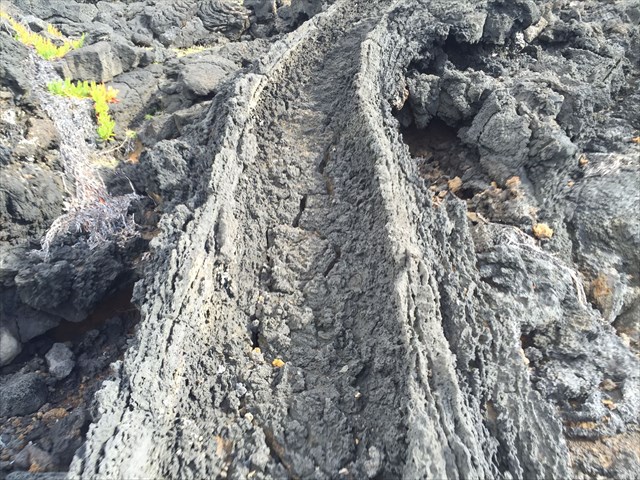
EARTHCACHE

PORTUGUÊS


CANAL LÁVICO
O local do GZ desta earthcache localiza-se perto da costa e próximo doFarol da Ponta da Barca.
As lavas existentes no local fazem parte do Complexo Vulcânico da Vitória – Vulcão Central, Unidade da Vitória,unidade esta que é constituída por escoadas lávicas e piroclastos basálticos provenientes de erupções vulcânicas monogenéticas, de estilo estromboliano/havaiano, cujo acumular dos produtos vulcânicos deu origem à extensa plataforma que constitui toda a parte noroeste da ilha Graciosa.
No local existe um canal lávico e vários tubos lávicos (que são canais lávicos com teto), de menores dimensões.
O processo de formação, de um tubo lávico, é idêntico ao processo de formação de um canal lávico, mas ao contrário de se proceder a “céu aberto”, toda a “corrente de lava” arrefece criando uma carapaça solidificada, mantendo-se o interior quente e fluido, permitindo a canalização da lava ao longo do interior do tubo e a sua progressão desde o foco eruptivo até à frente da escoada lávica.
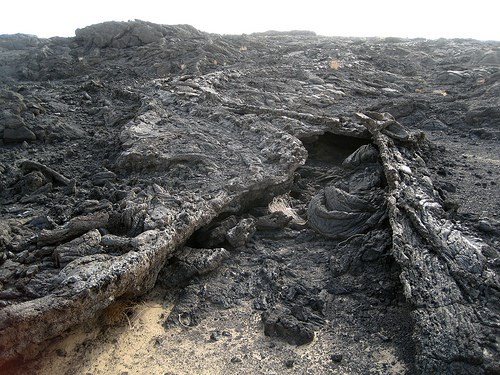
TUBOS DE LAVA
Tubos de lava são condutas naturais através dos quais a lava chega à superfície num fluxo de lava, expelido por um vulcão em erupção. Eles podem estar ativos quando a lava ainda flui em direção à superfície, ou extintos, o que significa que o fluxo de lava cessou e a rocha esfriou, deixando um longo canal, semelhante a uma caverna. Uma vez que esses tubos são formados simultaneamente à rocha que os envolve, diz-se que são cavernas primárias.
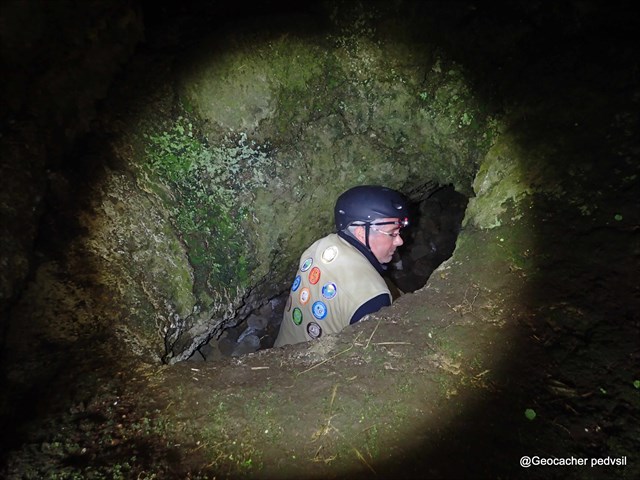
FORMAÇÃO DE TUBOS LÁVICOS
“Os tubos de lava formam-se de duas formas: pela solidificação de crostas sobre canais de lava e em derramamentos de lava pahoehoe, onde a lava flui sob a superfície.
A lava usualmente deixa o ponto de erupção e corre sobre a superfície em canais, que tendem a se manter muito quentes, enquanto as superfícies e o ar que os envolvem estão muito mais frios. A superfície do derramamento, ao entrar em contato com o ar, que está muito mais frio, solidifica criando uma crosta que age como um excelente isolante térmico para que o fluxo de lava possa manter sua temperatura no subsolo. Este é um mecanismo muito frequente na maiorias das escoadas basálticas e permite que a lava alcance grandes distâncias, podendo inclusive desaguar no mar após fluir somente pelo interior do tubo. Este tipo de tubo de lava costuma ter o seu início próximo ao ponto de erupção.

A crosta de lava solidificada se converte no teto do tubo que passa a se esvaziar à medida que o fluxo de lava diminui. Pouco a pouco, a vazão de lava diminui e uma cavidade é formada entre o teto sólido e o rio de lava incandescente. Dependendo do tempo de atividade do tubo, ele adquirirá maiores dimensões e maior complexidade morfológica, podendo criar diversos caminhos.
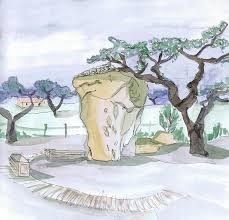
Em pontos mais distantes do ponto de erupção, a lava pode fluir em uma forma diferente, sem formação de canais, à medida que ela deixa sua fonte (em geral um outro tubo do primeiro tipo, que conduz a lava a partir do ponto de erupção) Este tipo de escoamento é chamado Pahoehoe que apresenta uma superfície macia e encordoada. A lava continua a fluir nessa forma até que seu resfriamento em contato com a atmosfera faz com que comece a bloquear o ponto de saída. Neste ponto, a lava sob a superfície ainda está quente o suficiente para encontrar outro caminho e irromper em outro ponto, que passa a ser a nova fonte. A lava flui sob a crosta solidificada, do ponto de saída anterior em direção à nova fonte, à medida que a lava externa do pahoehoe esfria. Isso forma um canal subterrâneo que se torna um tubo de lava”.
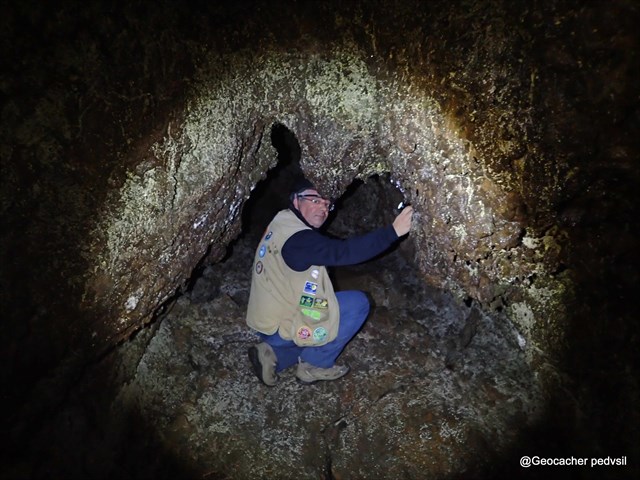
CARATERÍTICAS DE UM TUBO LÁVICO
“Um campo de lava normalmente constitui de um tubo de lava principal e de uma série de tubos menores, que fornecem lava para o fluxo. Quando o fornecimento de lava termina no fim de uma erupção ou quando a lava é desviada para outro caminho, a lava no interior dos tubos é drenada e deixa condutos parcialmente vazios sob a terra.

Estes tubos drenados costumam apresentar marcas em suas paredes que indicam o nível que a lava alcançou em diversas erupções. Além disso, os tubos costumam ter chão plano. Algumas também têm o teto plano. Estalactites de lava que caem do teto são raras nesse tipo de caverna. No entanto algumas pequenas formações de lava formam-se quando o fluxo se retrai e a lava viscosa no teto pinga enquanto resfria. Respingos são formados quando a lava espirra sobre as paredes do tubo.
O diâmetro do tubo pode variar entre 1 e 10 metros e podem atingir vários quilômetros. Sendo um mecanismo corrente de formação, é comum encontrar esse tipo de cavernas em regiões de origem vulcânica, como o Havaí (EUA), o Quênia e as Ilhas Canárias (Espanha) e nos Açores, onde se localizam os maiores tubos vulcânicos já registrados”.

PARA REALIZAR E REGISTAR ESTA EARTHCACHE:
PERGUNTAS:
Para “encontrar/registar” esta cache deverá: provar que esteve no local e responder às seguintes questões, enviando um email/mensagem de Geocaching, com as respostas, em português ou em inglês, para o nosso perfil.
Só depois, de enviar as respostas, e conforme as “guidelines” para as Earthcaches, deverá efetuar o seu registo!
Serão removidos todos os registos que não obedeçam a estes requisitos.
1. Estudando o tema geológico proposto nesta earthcache, responde às seguintes questões:
a) Explica, por palavras tuas, o que é um tubo lávico.
b) Distingue tubo lávico de canal lávico.
2. A partir das tuas observações a partir do GZ, responde às seguintes questões:
Classifica as rochas existentes no local, referindo o seu “tipo”, cor
(ou cores) e granulosidade.
3. A partir das tuas observações e medições (feitas, por exemplo, com o auxílio do GPS), responde às seguintes questões:
a) Estima o comprimento e a largura do canal lávico, existente no local.
b) Este canal lávico, apresenta alguma parte suspensa?
4. TAREFA OBRIGATÓRIA:Deverá tirar uma foto sua, onde você apareça (ou com um papel/placa onde conste o seu nickname e a data da visita) e que comprove a sua presença no GZ desta EC - NÃO META SPOILERS. Esta foto deverá ser colocada no seu registo ou enviada por email ou sistema de mensagens de Geocaching, para o owner!
Não responderemos ao seu contato, a não ser que haja algum “problema” com as suas respostas ou registo.


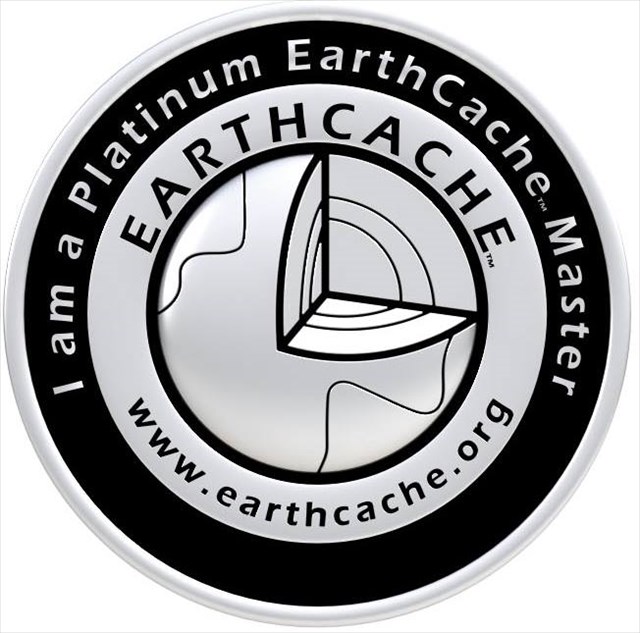

MAGMA SPLASH
[GRACIOSA – AZORES]
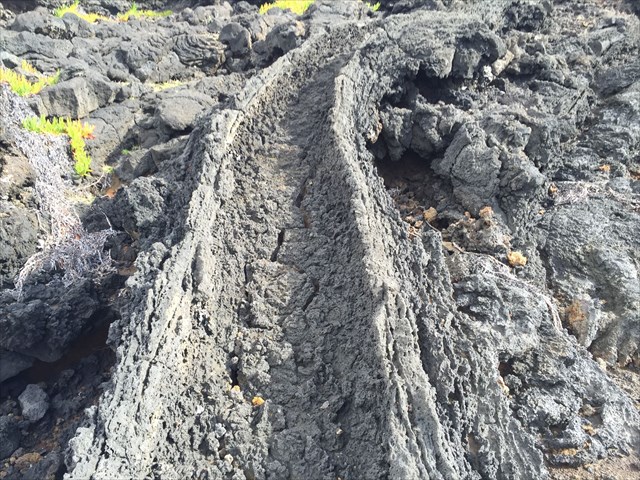
ENGLISH

EARTHCACHE
LAVA CHANNEL
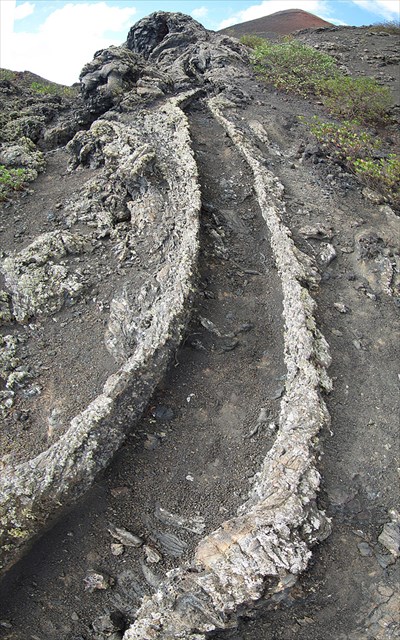
The GZ site this EarthCache located near the coast and near the Lighthouse of Ponta da Barca.
Existing lavas on site are part of the Volcanic Complex of Victory - Central Volcano, Unit of Victory, drive this that consists of lava flows and basaltic tephra from monogenéticas volcanic eruptions of Strombolian / Hawaiian style, which build up of volcanic products has given rise the extensive platform that constitutes the entire northwestern part of the island of Graciosa.
On site there is a lava channel and several lava tubes (which are lava channels with ceiling), smaller.
The formation process of a lava tube, is identical to the process of forming a lava channel, but instead to carry out "open skies", all the "lava stream" cools creating a shell solidified, keeping the hot fluid inside, so as to channel washes over the tube and its progression from eruptive focus to the front of lava drained.
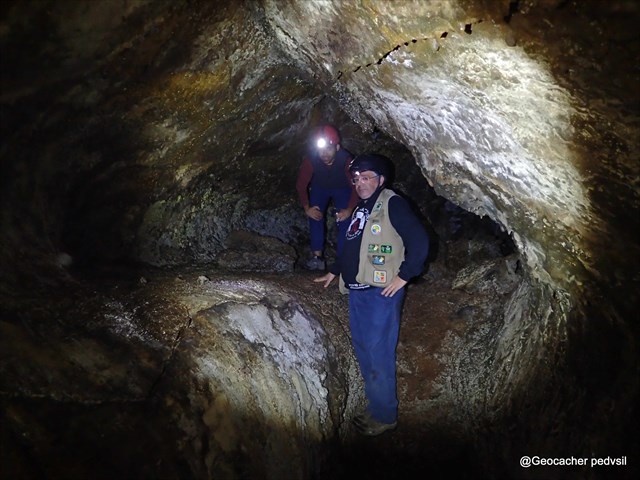
TUBE LAVA
Lava tubes are natural conduits through which the washing reaches the surface in a wash stream expelled by an erupting volcano. They may be active even when the washing flow towards the surface, or extinguished, which means that the flow has ceased and lava rock cooled, leaving a long channel, like a cave. Since these tubes are formed simultaneously with the rock which involves, it is said that are primary caves.
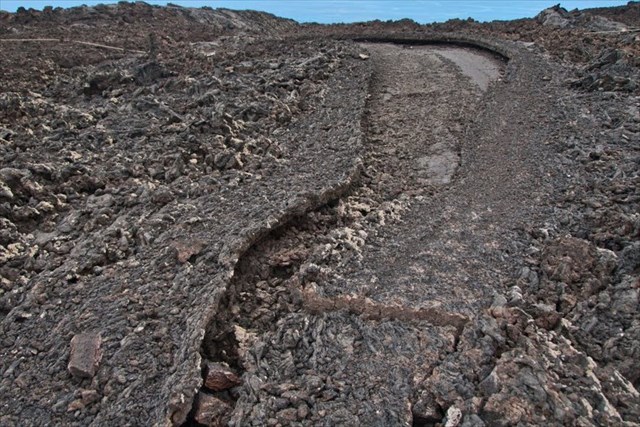
TUBES LAVA TRAINING
"Lava tubes are formed in two ways: by the crust solidifying on lava and lava channels pahoehoe spills, where the lava flows beneath the surface.
Lava usually leaves the point of eruption and runs on the surface in channels, which tend to remain very hot, while the surfaces and the air surrounding them are much cooler. The surface of the spill, on contact with air, which is much cooler, solidifies creating a crust that acts as an excellent insulator so that the lava flow can maintain its temperature underground. This is a very common mechanism in the majority of basaltic disposed and allows the lava reach long distances and may even flow into the sea after flowing only through the interior of the tube. This type of lava tube usually has its beginning near the eruption point.
The lava crust solidified becomes the tube ceiling passing to empty as the lava flow decreases. Little by little, the lava flow decreases and a cavity is formed between the solid roof and the river of incandescent lava. Depending tube activity time, it will get bigger and bigger morphological complexity and can create many paths.
Farther away from the eruption point, lava can flow in a different way, without formation of channels, as it leaves its source (usually another tube of the first type, leading to lava from the eruption point ) This type of flow is called Pahoehoe having a smooth surface and strung. Lava continues to flow this way until its cooling contact with the air causes it to begin blocking the exit point. At this point, the lava beneath the surface is still hot enough to find another way and bursting into another point, which becomes the new source. The lava flows in the solidified crust, the previous output point toward the new font, as the external pahoehoe lava cools. This forms an underground channel that becomes a lava tube. "
CHARACTERISTICS OF A PIPE LAVA
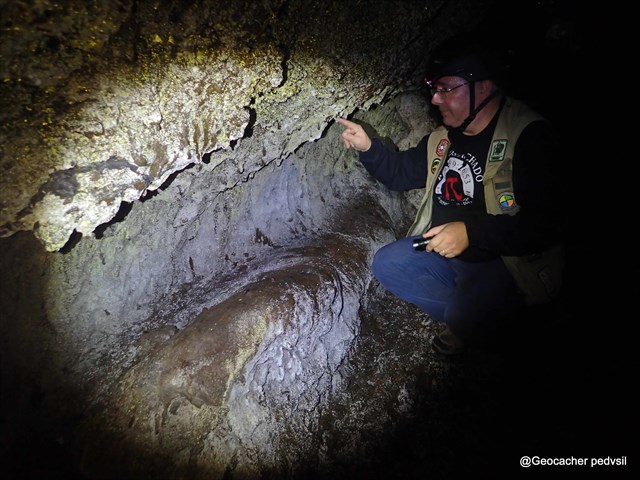
"A washing course is usually a tube main wash and a series of smaller tubes, which provide for the washing flow. When the supply of wash ends at the end of a rash or when the washer is diverted to another route, the washing inside the tubes is drained and leaves partially empty pipes under the ground.

These drained tubes often have marks on their walls that indicate the level the lava reached in several eruptions. Furthermore, the tubes tend to have flat floor. Some also have a flat roof. Lava stalactites falling from the ceiling are rare in this kind of cave. However some small lava formations are formed when the flow retracts and viscous lava cools while dripping from the ceiling. Splashes are formed when the washing splashes onto the walls of the tube.
The diameter of the tube can vary between 1 and 10 meters and can reach several kilometers. Being a training current mechanism, it is common to find this kind of caves in areas of volcanic origin, like Hawaii (USA), Kenya and the Canary Islands (Spain) and the Azores, where are located the largest volcanic tubes on record "

TO PERFORM AND LOG THIS EarthCache:
QUESTIONS:
To "find / register" this cache must: prove that visited the site and answer the following questions by sending an email / message Geocaching, with answers (in Portuguese or in English, only) to our profile.
Only later, sending the answers, and as the "guidelines" for EarthCaches should make your registration! They will be removed from all records that do not meet these requirements.
1. Studying the geological theme proposed this EarthCache, answer the
following questions:
a) Explain, in your words, which is a lava tube.
b) Distinguishes lava tube of lava channel.
2. From your observations from GZ, answer the following questions:
Classifies the existing rocks in place, making reference to "type"
color (or colors) and granularity.
3. From your observations and measurements (made, for example,
with the aid of GPS), answers the following questions:
a) the estimated length and the width of the channel lava,
existent in place.
b) The lava channel has some overhang?
4. TASK (not optional): You must take a picture of yourself, where do you show up, (or with a paper / plaque with your geocaching nickname and the date of the visit) and that proves your presence in the GZ of this EC - no spoilers please. This photo must be placed in your log or sent by email or Geocaching messaging system, to the owner!
We do not respond to your touch, unless there is a "problem" with their answers or register.



